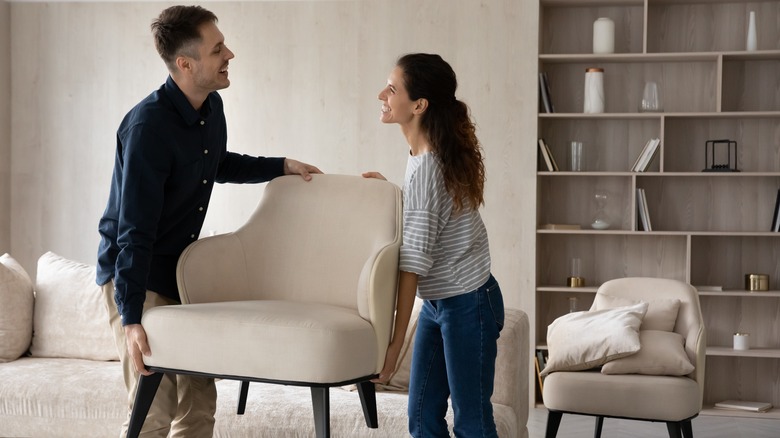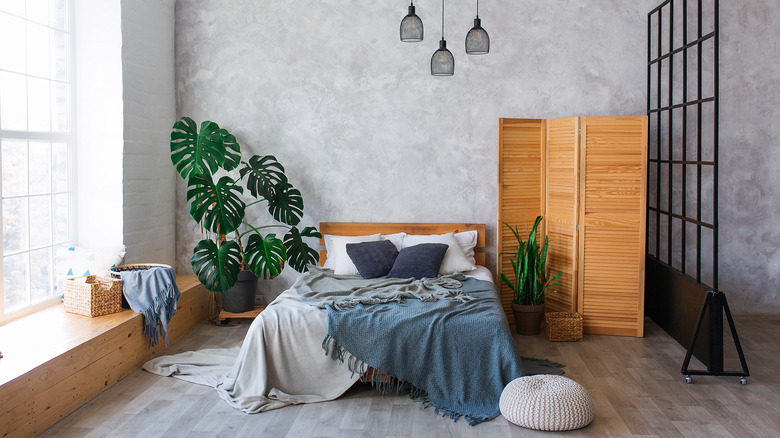What Is Vastu Shastra, And How Can It Help You Organize Your Home?
Our living spaces have a significant effect on our mental health. Have you ever realized how much more stressed and anxious you are in cluttered environments? How it is easier to focus on studying or work in a clean and organized space compared to a disarranged one? Science Direct completed a study that revealed the direct impact that clutter in the home has on our well-being, concluding that it is highly negative. Inviting in natural light and dedicating a small amount of time each day to cleaning will greatly improve your overall serotonin levels.
Minimizing clutter and keeping areas tidy will make you feel calmer, but have you ever thought about how door placement and furniture arrangement may also affect you? In Indian culture, people follow a traditional form of architecture that brings immense value to their welfare and success, known as Vastu Shastra. Take a look at how you can use Vastu Shastra to organize your home and give yourself more peace and tranquility.
What is Vastu Shastra?
A Sanskrit term that means the science of architecture, Vastu Shastra originated in India during the Vedic times (between 1500 B.C. and 600 B.C.). It signifies the spiritual connection between man and construction. The Encyclopedia on Vastu Shastra explains how it uses the five elements — earth, water, fire, air, and space — to work with our five senses, creating a prosperous environment. It is an Indian tradition that encompasses a home's spacial geometry, arrangement, layout, and measurements. Every detail creates a harmonious domain, from the direction a building faces to the soil it's built upon.
Finding the balance between living and designing with nature lies heavily with the four cardinal directions and their intercardinal counterparts in rotation with our planets. It is common knowledge that the sun sets in the west and rises in the east, and this can actually be used to create an improved atmosphere. The most important practice of Vastu Shastra lies in the eight directions. Knowledge of these orientations and how each emulates significance will guide you on how to organize your home for healthier living and elevated energy.
Interpreting cardinal and intercardinal directions
Each cardinal and intercardinal direction is credited to specific deities and attributes at the core of Indian beliefs. According to the Times of India, the north is dedicated to the god of wealth, Lord Kuber. This direction encourages fortune and growth. Ruled by Lord Shive, the northeast speaks to repose and vigor. The east continues this trend and is representative of progress and prosperity, overseen by Lord Indra of rain. East is a direction that should remain open, clean, and well-lit.
Times of India points out that the south and west have negative reputations but are still valuable to your home if utilized correctly. Yam, the Hindu deity of death, is dedicated to the south and deals with justice and the law. Southern home spaces should be kept closed off to maintain good energy. Lord Varun of glory and destiny runs the west, and much like the south, it should be less open than other areas for storing positive energy. The southwest — ruled by Niriti — and southeast — led by Agnidev — encapsulate purity, cleanliness, and strength.
Utilizing Vastu Shastra to organize your home
Many elements of Vastu Shastra are incorporated during the process of building, however, you can still apply it by rearranging your space. Magic Bricks reports that each room contains the necessary principles of design. In the living room, the north and east portions should remain open. Avoid placing large pieces of furniture in these directions and instead place them in the southwest for positive energy flow. It's said that guests should sit in the northwest or southeast and that you should never face a television toward the door of the room nor toward the southwest or the northeast.
The kitchen and dining room pantry should be in the northwest or southwest. If your current layout doesn't allow this, place five different grains in the northwest to signify that there is enough food in the home. The southeast and west are the best locations for a fridge that opens to the east. Garbage cans shouldn't be placed in the northeast, and televisions shouldn't face the dining table.
For the bedroom, the bed is recommended to be in the east and not facing a bathroom for better memory circulation and relaxed sleep. You'll want to avoid having mirrors facing opposite from the bed; they should instead be placed to the side. Finally, lamps should reside in the southern parts of the room, and televisions should be kept out of the bedroom as they can disturb peaceful sleep.



